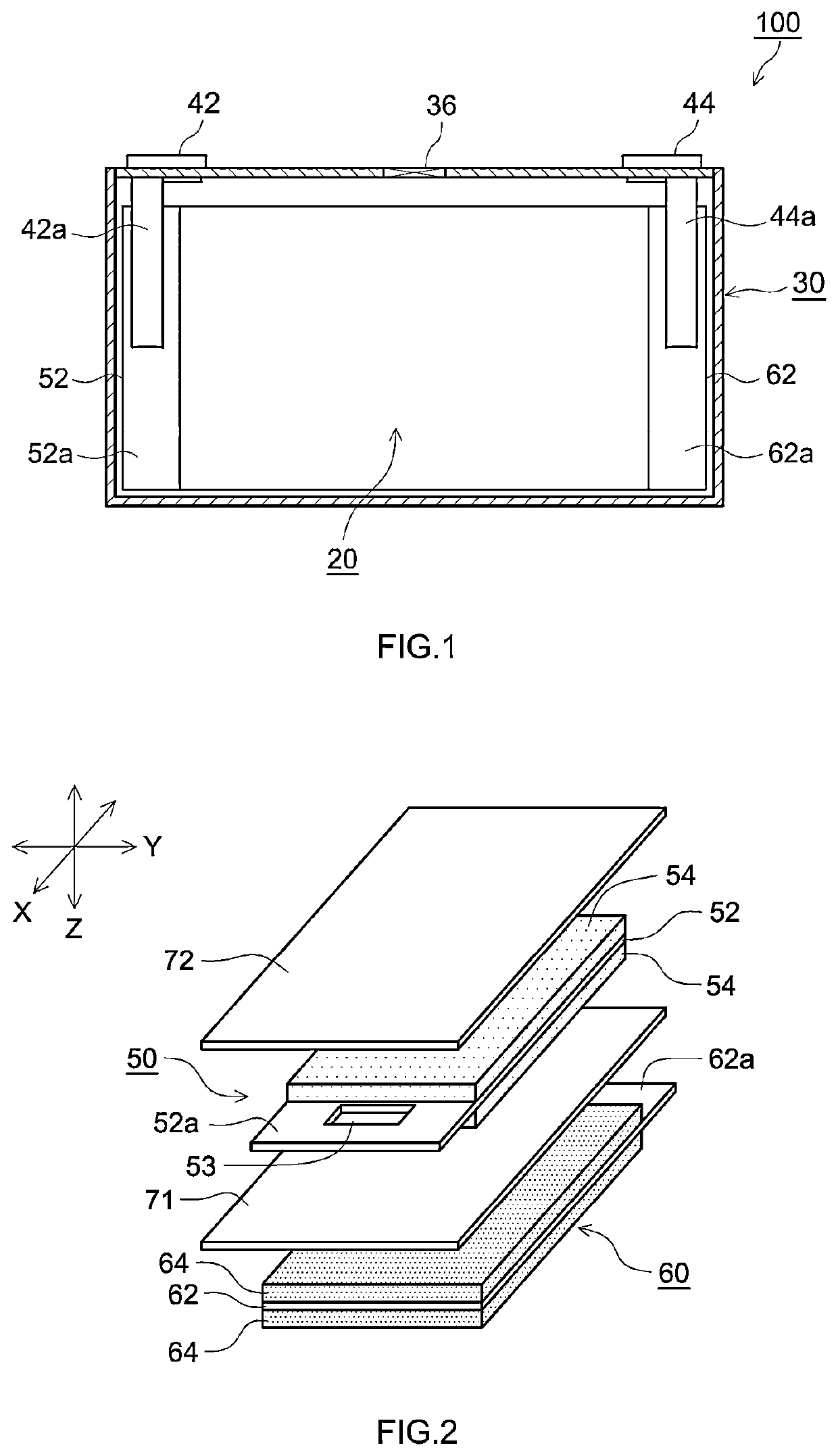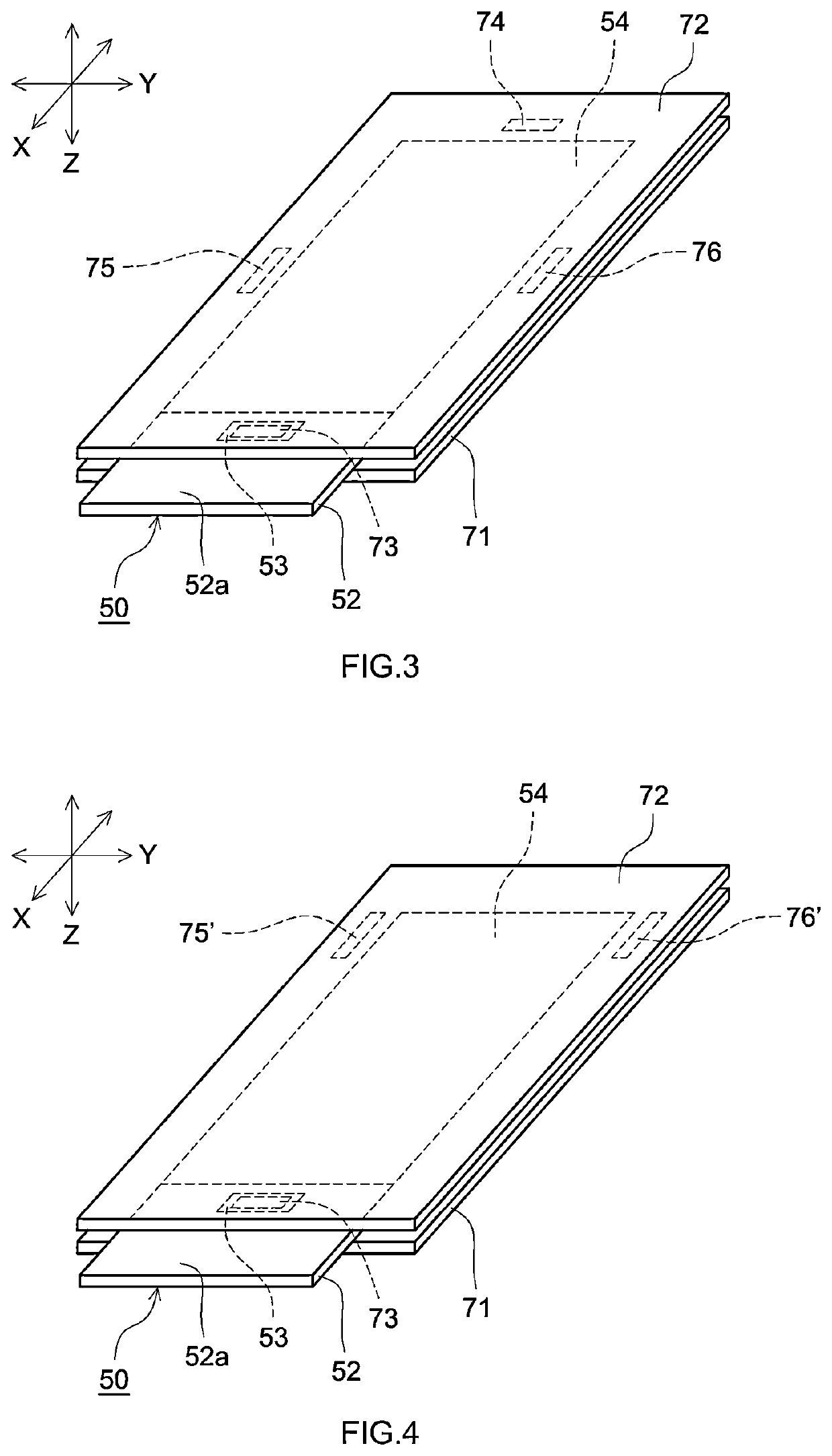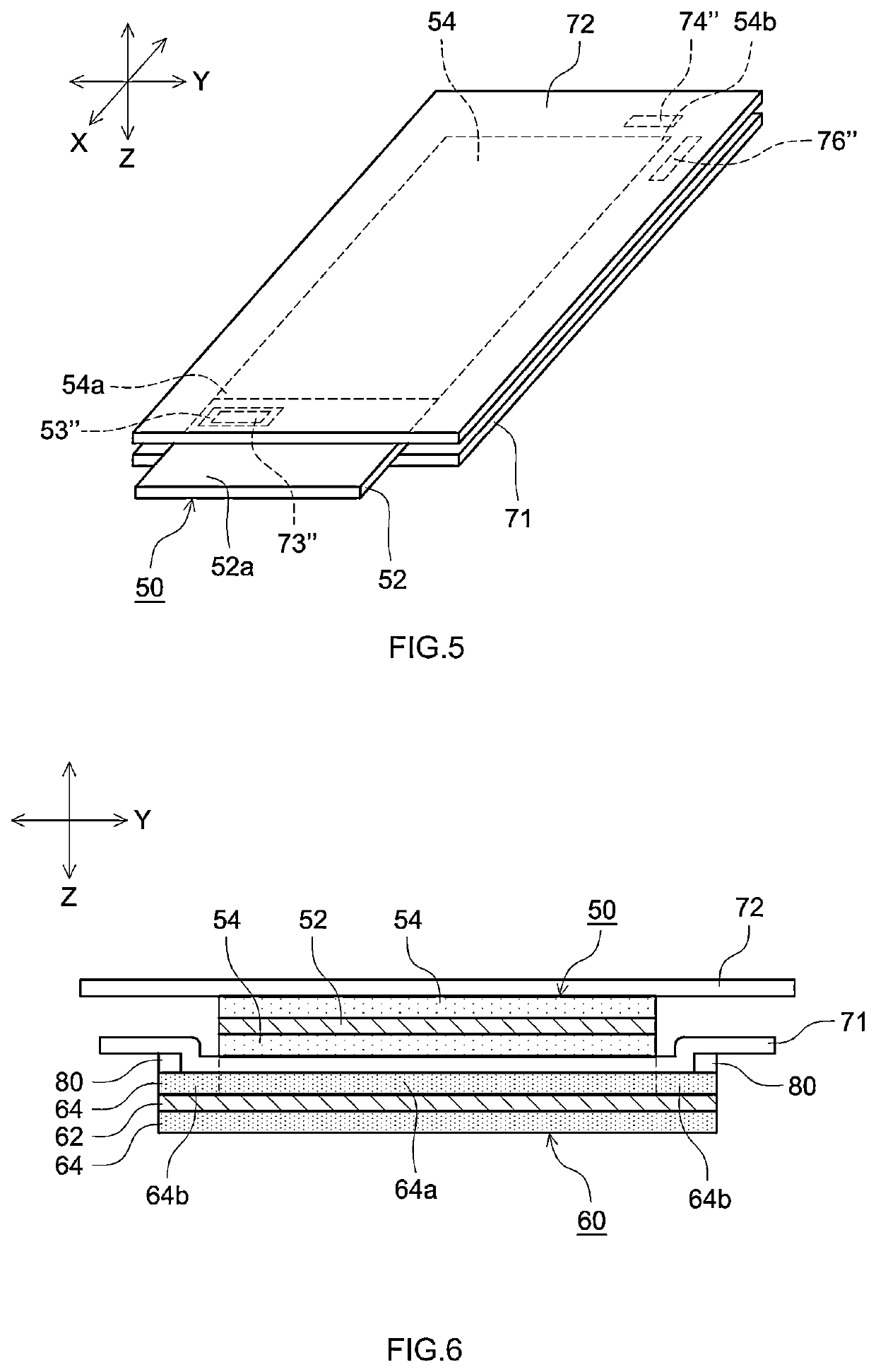Nonaqueous electrolyte secondary battery
a technology of non-aqueous electrolyte and secondary battery, which is applied in the direction of batteries, sustainable manufacturing/processing, cell components, etc., can solve the problems of increasing resistance, suppress the increase of resistance, and increase the strength of the second active material non-formation section, etc.
- Summary
- Abstract
- Description
- Claims
- Application Information
AI Technical Summary
Benefits of technology
Problems solved by technology
Method used
Image
Examples
example 1
[0089]A positive electrode was prepared which had a positive electrode active material layer containing LiNi0.8Co0.1Mn0.1O2 on both faces of an aluminum foil having a thickness of 13 μm. The dimensions of a main surface of the positive electrode active material layer were 300 mm×100 mm, and the thickness of the positive electrode active material layer was 135 μm. Further, a negative electrode was prepared which had a negative electrode active material layer containing natural graphite on both faces of a copper foil having a thickness of 8 μm. The dimensions of the main surfaces of the negative electrode active material layer were 302 mm×102 mm, and the thickness of the negative electrode active material layer was 170 μm. A positive electrode active material layer non-formation section at which the aluminum foil was exposed was provided in the positive electrode, and a negative electrode active material layer non-formation section at which the copper foil was exposed was provided in ...
reference example 1
[0097]The same positive electrode and negative electrode as in Example 1 were prepared. Also the same two separators as in Example 1 (i.e. a single-layer polypropylene porous film; main surface dimensions: 306 mm×104 mm, thickness 20 μm, air permeability 170 seconds / 100 mL) were prepared.
[0098]The positive electrode was sandwiched between the two separators. A cell unit was then produced by superimposing the separators, which had sandwiched the positive electrode, and the negative electrode. There were produced 90 of these cell units, which were then stacked to yield a stacked-type electrode body. A lithium ion secondary battery for evaluation was produced in the same way as in Example 1, using this stacked-type electrode body.
PUM
| Property | Measurement | Unit |
|---|---|---|
| thickness | aaaaa | aaaaa |
| thickness | aaaaa | aaaaa |
| thickness | aaaaa | aaaaa |
Abstract
Description
Claims
Application Information
 Login to View More
Login to View More - R&D
- Intellectual Property
- Life Sciences
- Materials
- Tech Scout
- Unparalleled Data Quality
- Higher Quality Content
- 60% Fewer Hallucinations
Browse by: Latest US Patents, China's latest patents, Technical Efficacy Thesaurus, Application Domain, Technology Topic, Popular Technical Reports.
© 2025 PatSnap. All rights reserved.Legal|Privacy policy|Modern Slavery Act Transparency Statement|Sitemap|About US| Contact US: help@patsnap.com



